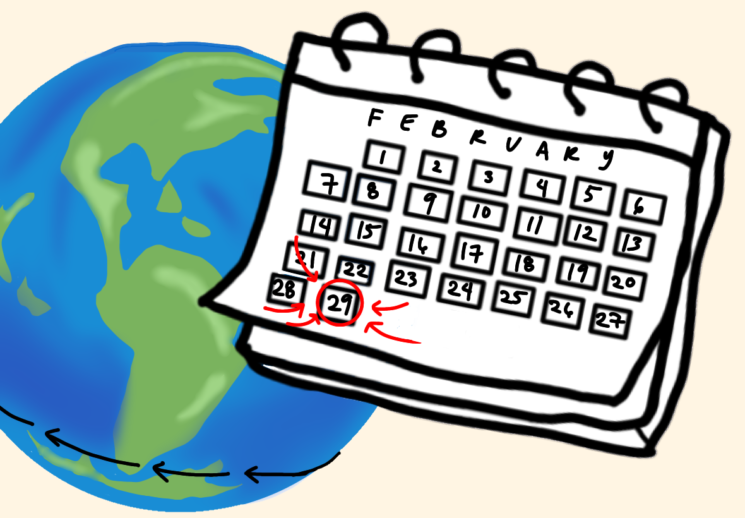
By Jayden Nguyen
What do you call a jump that lasts four years? A leap year! Have you ever thought to yourself why once every four years? Well, it’s a fascinating story of how this came to be. And like most stories about the origin of the world, it’s a long story…
First of all, what is a leap year? It’s a scientific phenomenon that occurs every four years (technically). This is because every solar year is 365.25 days long and a calendar year is 365 days. To make sure that the calendar is always caught up with the sun, every four years there’s another day added to the year in the shortest month of February. So instead of having 365 days, every four years we have a 366-day calendar. We call the occasion a leap year!
Since ancient times, scholars have noticed inaccuracies in their calendars from cultures such as Hebrew, Chinese and Buddhism. To make up for this inaccuracy, they would add months to correct their calendars, not days, but months. This was because these cultures used the lunar cycles for their calendars, eleven days off of the solar year. The concept of leap days, or months for this matter, has been around for a very long time.
In the time of the Romans, emperors and scholars attempted to align the lunar and solar cycles by containing a period in the year that lasted about 23 days, known as the Macedonius. However, this period could be shortened or lengthened based on the emperor at the time; by the time of Julius Caesar, the lunar and solar calendars were completely unaligned. This seemingly bothered Caesar.
To correct this inaccuracy, Caesar implemented an extra long year, lasting 445 days. This year, known as the year of confusion, was implemented in 45 B.C to re-align the solar and lunar calendars. With the influence of the Egyptian calendar, the Roman calendar was then changed to 365 days. With further mathematics and the help of astronomers and scholars, the year was then found to be 365.25 days long, or how long the earth takes to revolve around the sun. Instead of having the Macedonius, after the year 45 B.C., there was an added day to February.
This calendar was known as the Julian Calendar, which was implemented until the year 1582 and replaced with what is known as the Gregorian calendar. This calendar was the same, but when the year is divisible by 100 and not 400, the leap year is skipped. It was later revised once more in 1752, removing 11 days off of November. This is the same calendar that we still use today!
Hopefully, the leap year isn’t so confusing now; although it happens every four years, now we know why!





